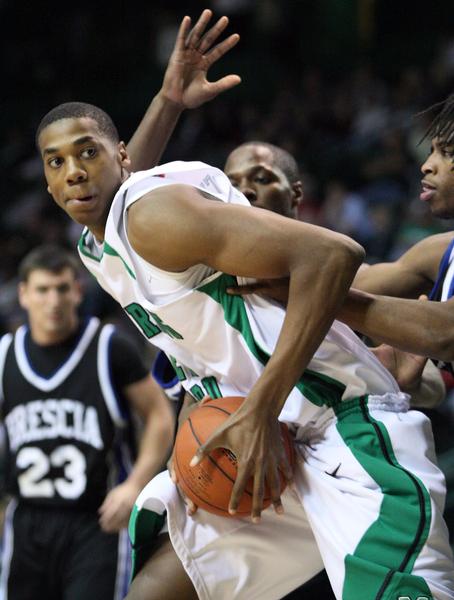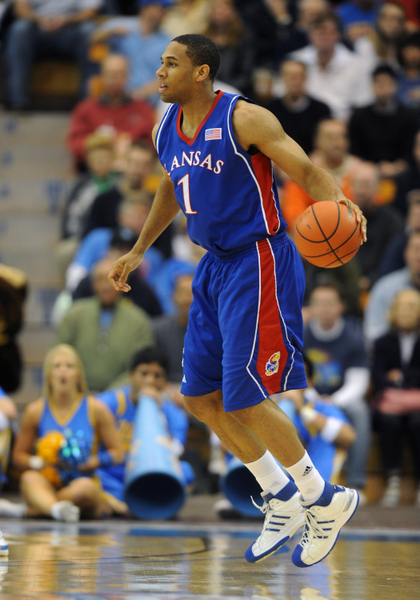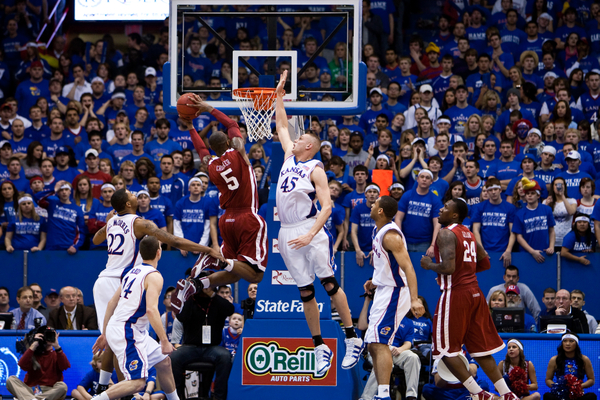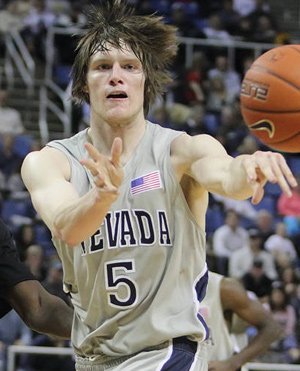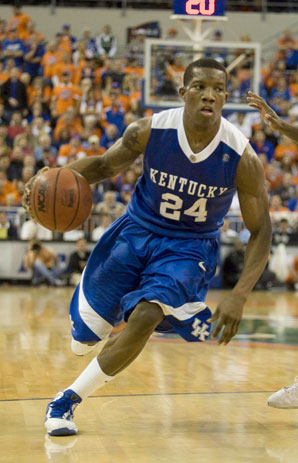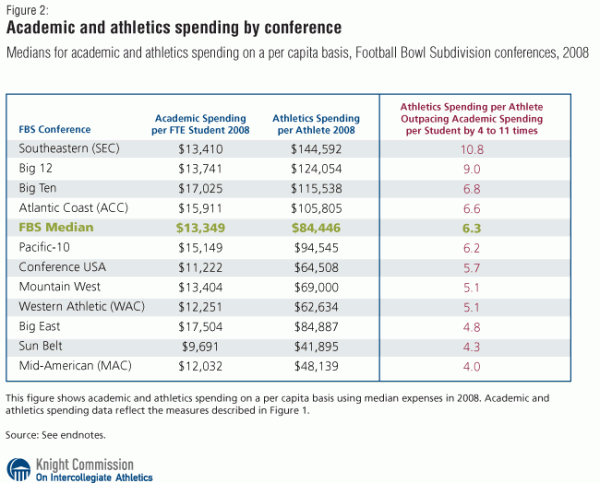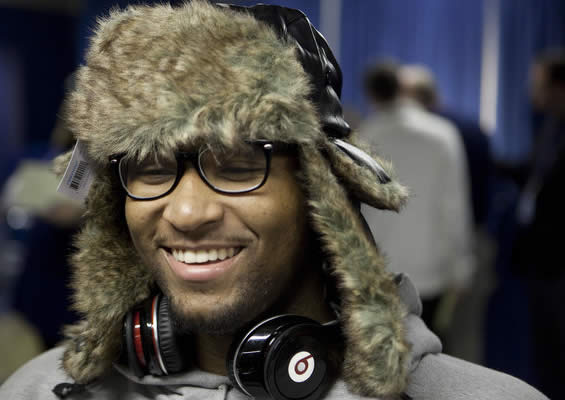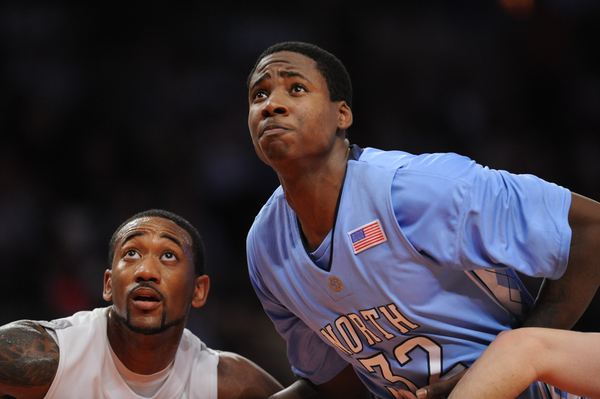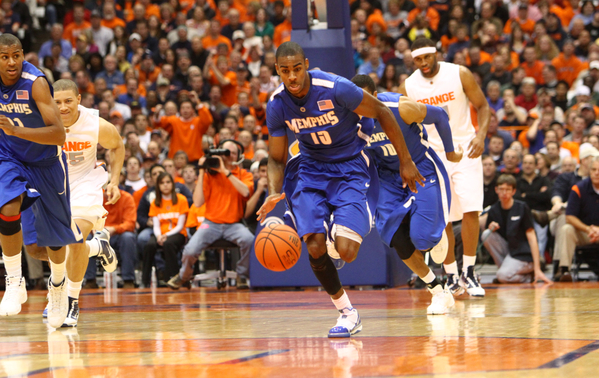
Over the course of the next month until the NBA Draft on June 24, RTC will be rolling out comprehensive profiles of the 30-35 collegians we feel have the best chance to hear their names called by David Stern in the first round that night. There won’t be any particular order to the list, but you can scroll back through all the finished profiles by clicking here.
Player Name: Daniel Orton
School: Kentucky
Height/Weight: 6’10/255
NBA Position: Power Forward/Center
Projected Draft Range: Late First Round
Overview: If you needed any further proof that the NBA Draft selects players on potential and not on actual past performance, look no further than Daniel Orton. That’s not to say that Orton didn’t produce for Kentucky in his one season there. He certainly did everything that was expected of him, and did it well. But we’re talking about a player who averaged 3.4 points, 3.3 rebounds, and just 13.1 minutes a game. That said, Orton was excellent in his role as a backup to DeMarcus Cousins and Patrick Patterson as needed, excelling on defense, specifically shot-blocking, and showing enough raw offensive skills to have the scouts salivating. He only hit double-figures twice all season, but that’s just because of the limited minutes. With talent like this, if he’d have gotten the time (or stayed in school longer) his numbers would have probably been about triple what they were.
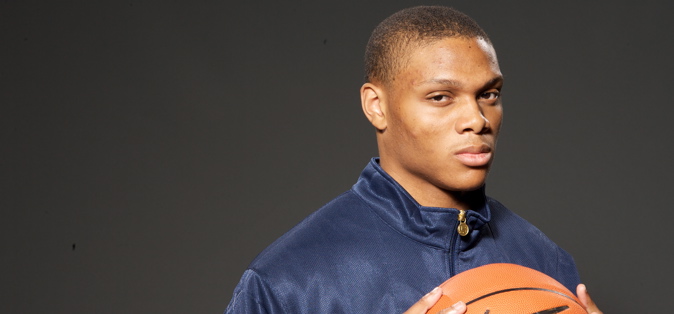
An intense, imposing physical specimen, Orton will carve out a living hitting the glass and blocking shots.
Will Translate to the NBA: Orton’s body was NBA-ready by the time he played his first college game. He frequently uses that size to overpower defenders on his way to the basket and finish with confidence. Though it could stand a little more arch, his jumper is fairly solid at this early stage. He is physically imposing but actually has very nice touch on his shot after a post move and certainly as he gets right up to the rim. On the defensive side, he’s way ahead of the curve in terms of shot-blocking ability, and that skill is evident whether he’s guarding his man straight up or if he’s leaving his man and helping from the weak side.
Needs Work: Orton played so little compared to a lot of prospects, teams just don’t have that much to go on. He had surgery on his left knee during his last year of high school, and while he never appeared to be favoring it, there were times when simple post moves or getting up the floor on a break seemed a little harder than one would think. Because he’s going to make his living down low, he’s going to be getting to the free throw line a lot, and raising his percentage up from the 52% he shot at Ketnucky (to be fair, that was also his field goal percentage) is required. Finally, it was a single incident, but the in-game sideline spat with coach John Calipari in the SEC Tournament was highly publicized, and Orton didn’t help his image by actually leaving the bench and going back to the locker room, even if he was under orders. He’ll need to convince teams that his head’s in the right place and he won’t make a habit of openly questioning authority.
Comparison Players: Orton’s use of his physique to do things like create space for shots, set screens, and out-muscle opponents for rebounds reminds us of Leon Powe of the Cleveland Cavaliers. If a Kentucky example is needed, his physique brings to mind the Rockets’ Chuck Hayes; like Hayes, Orton’s greatest value to an NBA team will come on defense. Hayes is a little quicker, but Orton actually has a higher offensive ceiling.
Best Case Scenario: The key to Daniel Orton’s success will be patience. He has the body and all the tools to carve out a very nice decade-long NBA career, if not longer. But because he’s being drafted largely on potential, the team that drafts him will need to see some of that potential become realized in practice and in limited game time before they’ll really unleash him. That’s not the easiest thing for young players to accept. If he can show off his defensive abilities enough through hard work in practice, he’ll get more minutes in games, and then the offensive chances will come. If he’s satisfied with that, after a few seasons his game could be refined enough to where he’ll find a niche on a team that needs a tough-nosed, hard-rebounding, “glue-guy” type of player that the fans love, the type of player that embodies the hard work coaches would like to see out of their whole roster.
2013 Projection: The process described above will still be happening after three seasons. We wouldn’t be surprised to see him start to get increased minutes late in his third season and thereafter. Up to that point, we’d expect Orton to have made an early living as a rebounding and shot-blocking specialist while the full range of his offensive game continues to grow.
Best NBA Fit: Orton will be taken almost right in the middle of the draft, and while Oklahoma City (21st and 26th pick) needs front line help in a major way — and it’s a pick that would land Orton back in his home state — the best fit for him as far as teams in that range is the Boston Celtics (19th pick). Despite their post-season success, Boston was one of the worst rebounding teams in the league (29th of 30) and averaged a -1.5 rebounding margin. If Kendrick Perkins‘ knee remains suspect and the retirement rumors about Rasheed Wallace are true, the Celtics would be left without a true center, and the third man on the depth chart at PF would be the unimpressive Shelden Williams. Plus, you could do a lot worse than to have Kevin Garnett as a teammate and mentor.






























